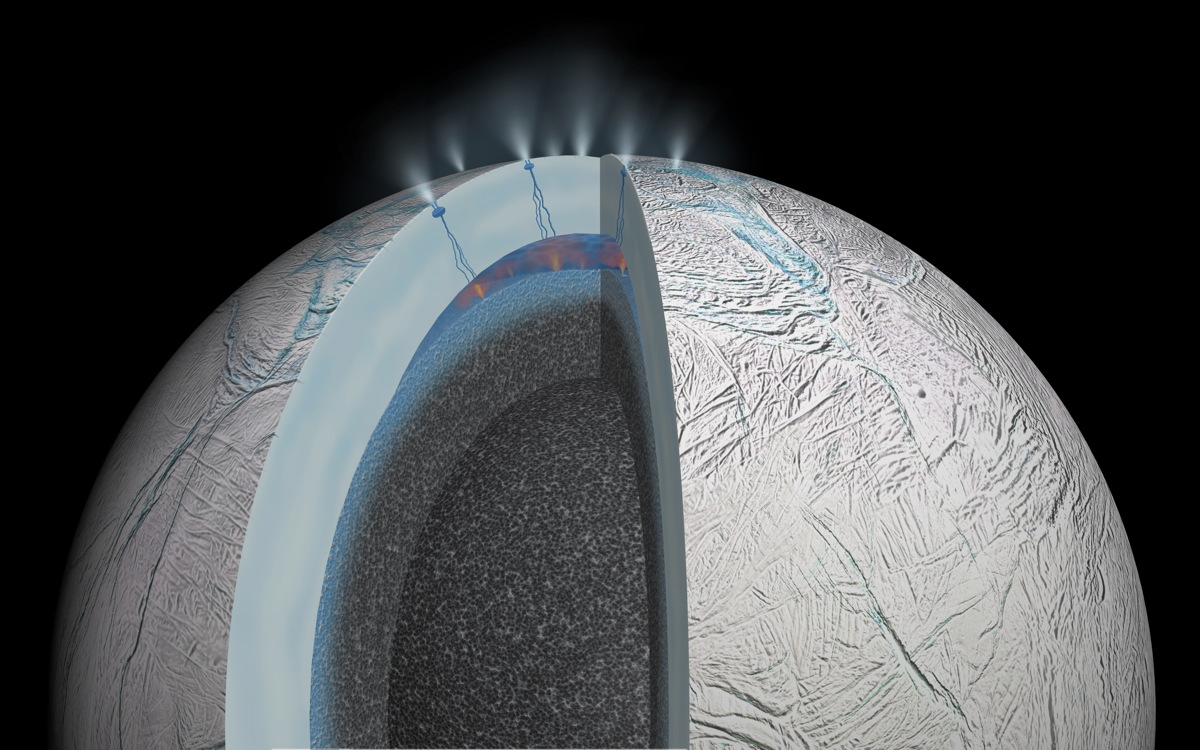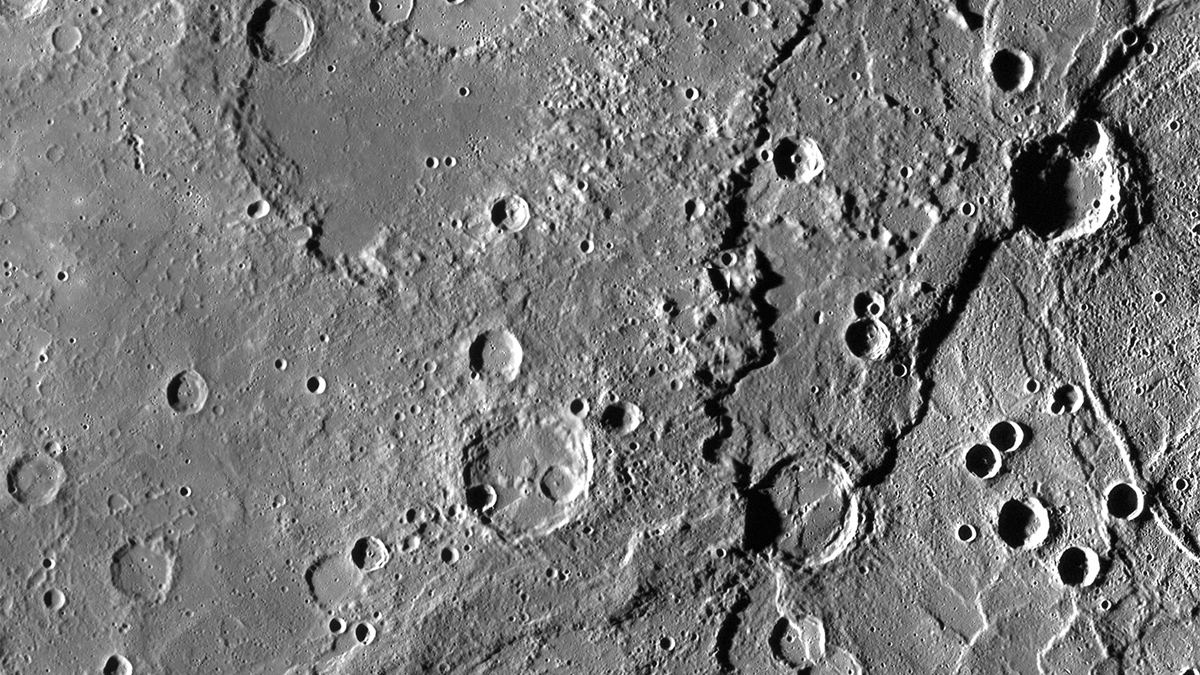
NASA launched a new space-weather mission, scientists found evidence of a hydrothermal system on Saturn's ocean-bearing moon Enceladus and three astronauts returned safely to Earth after nearly six months aboard the International Space Station. Here's a look at Space.com's top stories of the week:
NASA space weather mission takes flight
NASA launched its Magnetospheric Multiscale (MMS) mission, which consists of four satellites that will study energy eruptions in Earth’s magnetic field caused by space weather. MMS blasted off Thursday night (March 12) from Cape Canaveral, Florida, aboard a United Launch Alliance Atlas V rocket. [Full Story: Spectacular Night Launch Sends NASA Satellites on Hunt for Magnetic Collisions]
A hydrothermal system on Enceladus
Scientists have found evidence of active hydrothermal vents on Saturn's ice-covered moon Enceladus. Conditions deep in Enceladus' subsurface ocean may therefore be similar to those that gave rise to the first life on Earth. [Full Story: Hot Springs on Saturn's Moon Enceladus Powered by Hydrothermal Vents]
Spaceflyers come home
A Russian Soyuz spacecraft touched down on the steppes of Kazakhstan Wednesday night (March 11), wrapping up a nearly six-month stint aboard the International Space Station for NASA astronaut Barry "Butch" Wilmore and cosmonauts Alexander Samokutyaev and Elena Serova. [Full Story: US-Russian Space Crew Returns to Earth After 167 Days in Orbit]
Breaking space news, the latest updates on rocket launches, skywatching events and more!
Happy birthday, Kepler!
NASA's prolific Kepler space telescope, which has discovered more than half of all known planets beyond our solar system, just celebrated six years in space. The prolific planet hunter blasted off on March 6, 2009. [Full Story: Happy Birthday, Kepler! NASA Planet Hunter Marks 6 Years in Space]
NASA test-fires booster for Space Launch System megarocket
A giant rocket booster designed to help NASA’s next megarocket, the Space Launch System, soar into space roared to life in the Utah proving grounds of aerospace firm Orbital ATK on Wednesday (March 11). [Full Story: World's Largest Solid Rocket Booster Fired in Ground Test for NASA]
The first X-flare of 2015
The sun unleashed its first superpowerful flare of the year on Wednesday (March 11), and the intense eruption was aimed directly at Earth. The monster X-class solar flare, the strongest category of sun storms, caused an hour-long blackout in high-frequency radio communications over wide areas. [Full Story: Sun Unleashes 1st Monster Solar Flare of 2015 (Photos, Video)]
Pluto probe performs most-distant engine burn ever
NASA's New Horizons spacecraft, which will zoom through the Pluto system on July 14, fired its engines for 93 seconds on Tuesday (March 10), when it was about 3 billion miles (4.83 billion kilometers) from Earth. No spacecraft had ever conducted an engine burn at so great a distance from its handlers, mission officials said. [Full Story: NASA Probe Makes Record-Setting Engine Burn on Path to Pluto]
A subsurface ocean on Ganymede
A salty ocean lurks beneath the icy surface of Jupiter's largest moon, Ganymede, scientists using NASA's Hubble Space Telescope have found. Ganymede's ocean could actually harbor more water than all of Earth's surface water combined, according to NASA officials. [Full Story: Jupiter's Moon Ganymede Has a Salty Ocean with More Water than Earth]
Opportunity spies odd rocks near end of marathon trek
NASA's Opportunity Mars rover took a break in the home stretch of its Red Planet marathon to study some rocks the likes of which it's never seen before. As of March 5, the rover's odometer read 26.139 miles (42.067 kilometers), leaving it just 140 yards (128 meters) short of the marathon milestone. [Full Story: On Mars, Opportunity Rover Spots Weird Rocks Near Marathon Finish Line]
Lockheed Martin unveils ambitious new space transportation system
Aerospace firm Lockheed Martin has announced its plans for a new spaceflight system that could ferry cargo to the International Space Station, and also help get people to deep-space destinations such as the moon and Mars. [Full Story: Lockheed's 'Jupiter' Space Tug Could Fly to Space Station, Moon and Beyond]
What will NASA's Dawn probe look for at dwarf planet Ceres?
A Q&A with Chris Russell, principal investigator of NASA's Dawn mission, which recently arrived in orbit around the dwarf planet Ceres. [Full Story: Studying Dwarf Planet Ceres: Q&A with Dawn Scientist Chris Russell]
Follow Mike Wall on Twitter @michaeldwall and Google+. Follow us @Spacedotcom, Facebook or Google+.
Join our Space Forums to keep talking space on the latest missions, night sky and more! And if you have a news tip, correction or comment, let us know at: community@space.com.

Michael Wall is a Senior Space Writer with Space.com and joined the team in 2010. He primarily covers exoplanets, spaceflight and military space, but has been known to dabble in the space art beat. His book about the search for alien life, "Out There," was published on Nov. 13, 2018. Before becoming a science writer, Michael worked as a herpetologist and wildlife biologist. He has a Ph.D. in evolutionary biology from the University of Sydney, Australia, a bachelor's degree from the University of Arizona, and a graduate certificate in science writing from the University of California, Santa Cruz. To find out what his latest project is, you can follow Michael on Twitter.
